In December of 1776, Benjamin Franklin was sent to France on a secret mission: to form an alliance with one monarchy in hopes of overthrowing another. Franklin was 70 years old and had no formal diplomatic training. The war was going poorly—even Franklin’s own son remained a committed loyalist and, like most Europeans, didn’t believe America had a chance. Despite these long odds, somehow the washed-up scientist pulled off the greatest diplomatic victory in American history.
That’s the backdrop for the new Apple TV+ series Franklin, which features Michael Douglas stepping into the big-buckled shoes of America’s first diplomat and taking us along to witness his world-altering adventures.
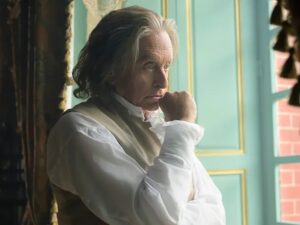
With so many entrenched conflicts and diplomatic impasses around the world, the new series inspired me to ask some timely questions: How did someone with no staff, no support, and no formal training manage to convince the French monarchy to bankroll America’s revolution and pull off the greatest diplomatic victory in American history? And is there anything we can learn from Franklin’s success to apply to diplomacy today?
Two years ago, Ken Burns embarked on a series of conversations about Franklin’s diplomatic exploits for PBS, interviewing everyone from former Secretary of State Condoleezza Rice to the current U.S. Ambassador to China Nicholas Burns to Michael Douglas, who had been preparing for his new role. As a former U.S. State Department speechwriter, I was very interested in what they had to say. I took six lessons from these discussions on Franklin’s time in Paris.
Countries don’t do diplomacy. People do.
We often speak in terms like “America needed to convince France to support them in the Revolutionary War.” In reality, countries are represented by specific people—and the impressions and relationships they make can start a war or end one.
In America’s case, as Secretary Rice explains it, the young insurgent nation needed a big figure to represent it. So they sent the only person that anyone in France had ever heard of—the inventor, educator, writer, publisher, and notorious flirt Benjamin Franklin—to make their case to King Louis XVI and the Comte de Vergennes, France’s Foreign Minister.
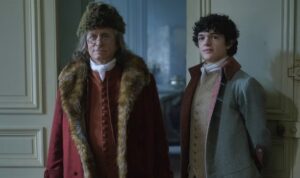
But the French hadn’t just heard of him—Franklin was an A-List celeb. Crowds flocked to see him. Groupies, particularly women, flung themselves upon him. And Franklin leaned into it. Ken Burns describes, for example, the soft hat made of marten fur that Franklin wore everywhere. This bizarre cap wasn’t just a way to cover the psoriasis scars on his bald head. It was also a clever homage to the French-Swiss philosopher Rousseau, and a way to stand out in stark contrast to the powdered wigs popular in elite French circles.
I’m not saying today’s diplomats should try donning weasel caps. But it sure would get attention! And it worked for Franklin, who wrote home that in France his face was “as well-known as that of the moon.” By making himself interesting, Franklin made himself in demand—the French nobility wanted to spend as much time with him as they could, which gave Franklin the opportunity to persuade King Louis XVI to underwrite the American Revolution.
Diplomats don’t come in one size.
The colonies could have sent a seasoned diplomat to France. Though there had never been an American diplomat before, they could have picked someone with traditionally similar skill sets. Perhaps someone who had been a diplomat for Great Britain or who had negotiated with Native Americans.
Instead, they went with the eccentric inventor, the ribald publisher, the famous Franklin. And they were right to do so. This is a lesson we’re still having to relearn today: diplomats don’t have to look a certain way or have a particular kind of experience. In fact, having a diversity of experiences and viewpoints makes for a smarter and better-equipped diplomatic corps that can relate to more types of peoples and cultures.
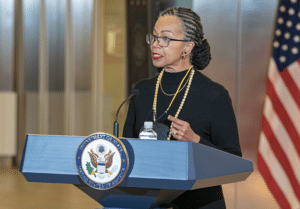
That was the charge of Ambassador Gina Abercrombie-Winstanley, a thirty-year diplomat who came out of retirement to serve as the State Department’s Chief Diversity and Inclusion Officer. She worked hard to change the culture of the Foreign Service and ensure our country’s diplomats don’t conform to the traditional standards of, in her words, “pale, male, and Yale.”
The State Department has also broadened out the types of experiences it looks for. The department announced this January that it’s trying a “lateral entry pilot program,” allowing mid-level entry into the Foreign Service for the first time in its history.
Great diplomats listen more than they talk.
If Franklin had simply come to France and demanded support for the righteous causes of freedom and democracy, he would have flopped. And probably been beheaded. After all, he was pitching a monarch on supporting the overthrow of another monarch. But it was King Louis XVI who would eventually lose his head, after supporting the very ideas that eventually sparked a revolution in his own country. How did that happen?
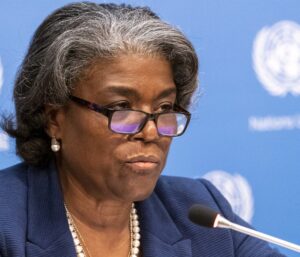
When I was serving under Ambassador Thomas-Greenfield, the U.S. Ambassador to the UN, I noticed that she started almost every meeting not by talking, but by listening. Franklin deployed a similar technique: before he made his case, he got to know the nobility and tried to understand what went on inside of King Louis XVI’s then firmly-attached head. He learned that the King’s ego was bruised after the terrible loss to Great Britain in the Seven Years War. That was when Franklin made his move, appealing to King Louis XVI’s own selfish interests. He convinced the King and his court that by supporting the Americans, the King would weaken his great rival and help France re-emerge as the preeminent world power.
Big risks can deliver big rewards.
Though America’s pastime hadn’t yet been invented, Franklin’s hometown Phillies (with their new see-through pants!) would’ve been proud of how Benjamin swung for the fences. He didn’t just try to secure France’s friendship. He asked for money, military support, and naval support—and got all three. Alone in a foreign land, it was a risk to go for broke, but Franklin’s courage likely made all the difference in winning the Revolutionary War.
When John Kerry became Secretary of State, he told CNN that he was embracing a similar mindset. “I lost the presidency of the United States,” he explained. “So you can’t lose anything much bigger than that. And what it taught me is, don’t worry about it. If you have an opportunity to get things done, go get them done.”
To solve our world’s most intractable problems—like climate change or the current conflicts in the Middle East—our diplomats need to be willing to take big swings and take real risks. Otherwise, we can expect more of the same.
Good Cop/Bad Cop is a tried-and-true diplomacy tool.
When John Adams arrived in France, whether he realized it or not, he deployed a classic diplomacy technique. As Judy Woodruff shares with Ken Burns, Adams’ brash insistence on getting what he wanted made him the “bad cop” for the French. His insistent demands did not exactly make Adams popular among the French élite. Even though Franklin wasn’t always beloved among the French royalty (the King literally had a chamber pot with Franklin’s face on it), they much preferred working with him—and subsequently gave him what he wanted.
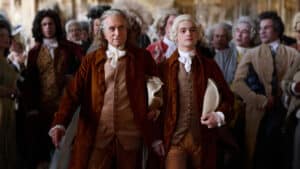
This same technique has been used across countless diplomatic negotiations. In the lead up to the Iran Deal (the JCPOA) under the Obama Administration, European negotiators served as a kind of “good cop” to the “bad cop” of their American counterparts—ultimately getting Iran to agree to a deal. It’s basic political science: offer two choices and they’ll pick the less bad outcome.
Wars don’t end on the battlefield. They end at the negotiating table.
Diplomats don’t get as much credit as generals, but they should. As Ambassador Burns pointed out in the conversation, it wasn’t the Battle of Yorktown that ended the Revolutionary War but the Treaty of Paris, which wasn’t signed until two years later in 1783.
That treaty, negotiated by Franklin, delivered a total victory for the former colonies, by cutting out France and Spain from the negotiations and dealing directly with Great Britain. And the “amicable” Franklin surprised his co-negotiators, John Adams and John Jay, with his adamant insistence that there be no reparations for British sympathizers. Tough luck for Benedict Arnold.
It’s no wonder that when the Constitutional Convention happened, the very first person George Washington went to see was, according to Ken Burns, his equal: Benjamin Franklin, the man who understood negotiating better than anyone.
Right now, the state of our world demands better diplomacy. We recently marked the second anniversary of Russia’s invasion of Ukraine, as conflicts rage on in Gaza, Sudan, Myanmar, Yemen, and the Sahel. And challenges that require cooperation across allies and adversaries alike—from climate change to global hunger to artificial intelligence—loom large.
Perhaps looking back to Benjamin Franklin’s example might inspire us toward the kind of people-to-people diplomacy we so desperately need. Weasel caps and all.
Franklin is now streaming on Apple TV+.
Conversations on Franklin is available on PBS.


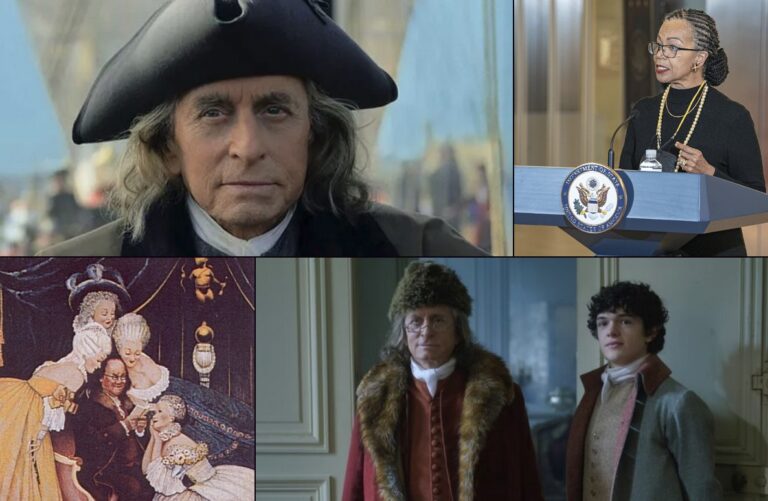
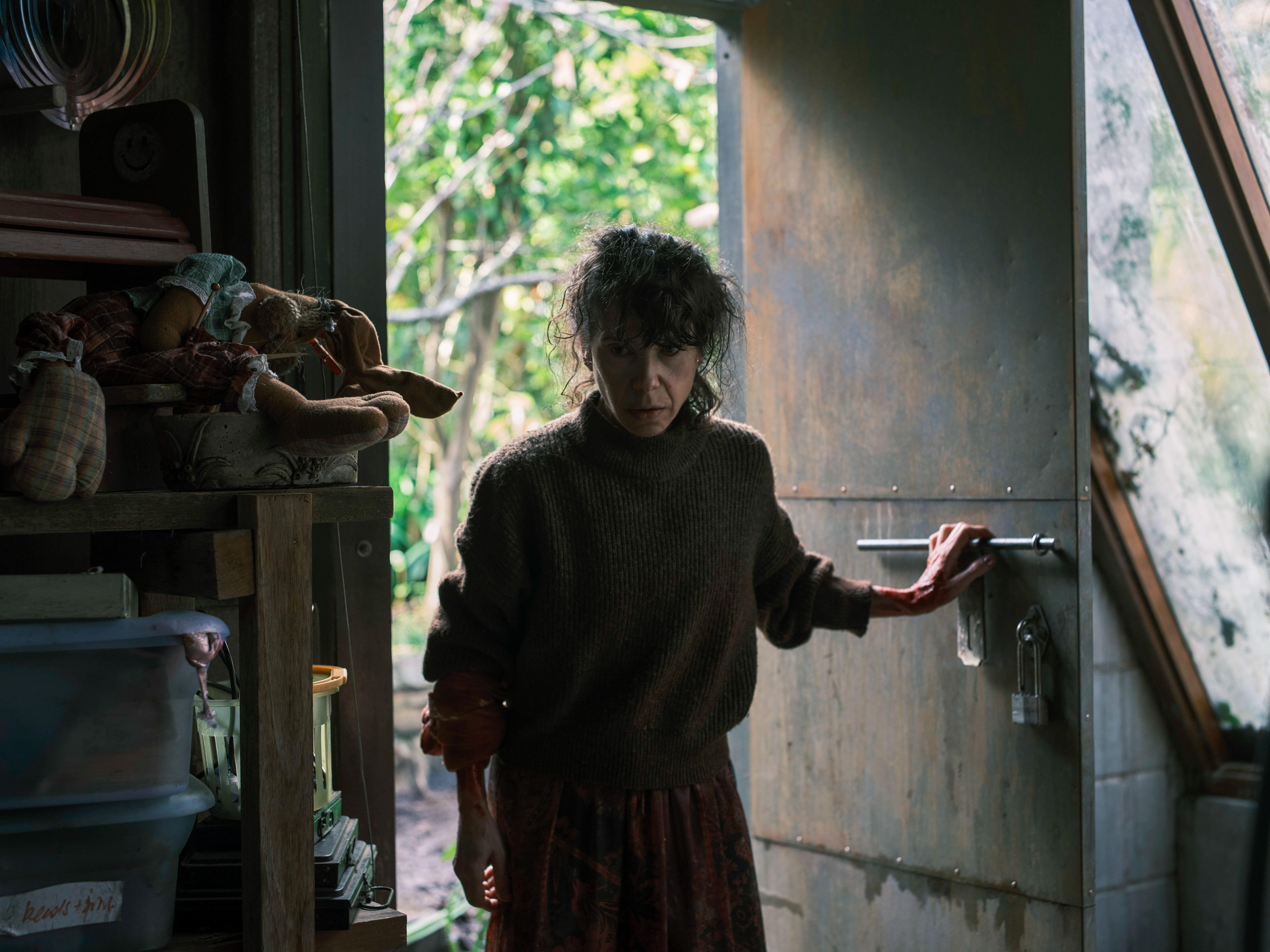
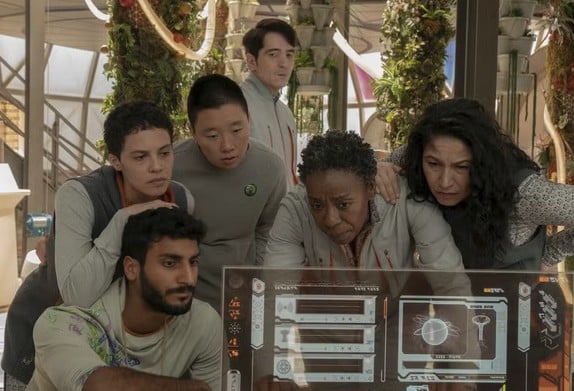
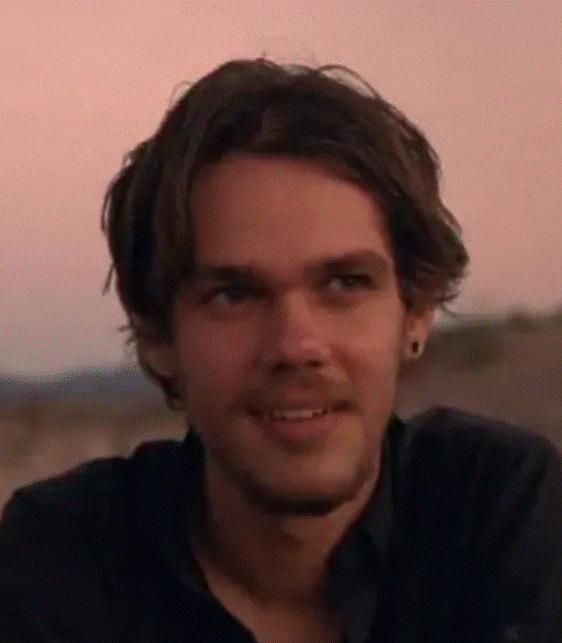
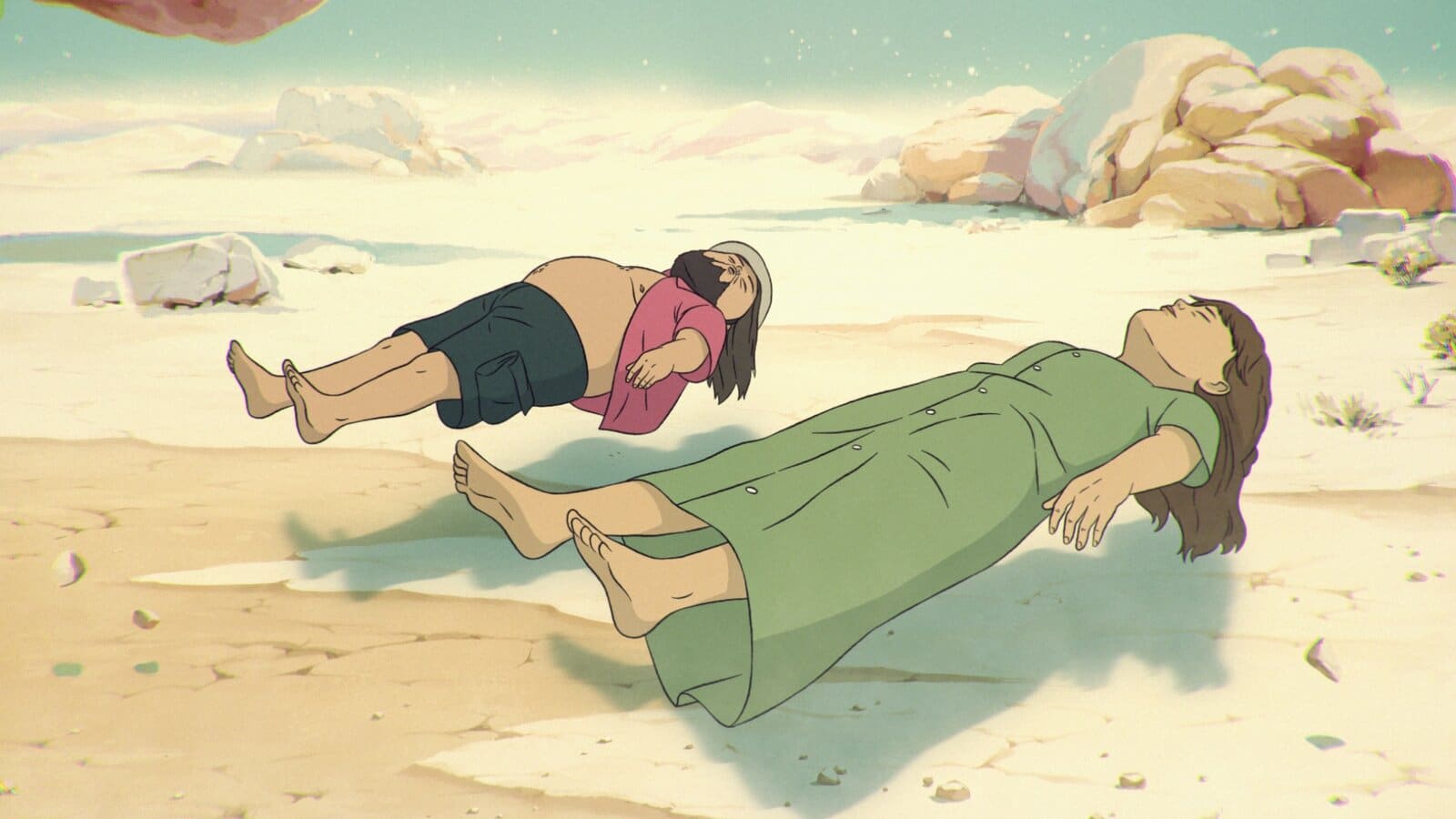
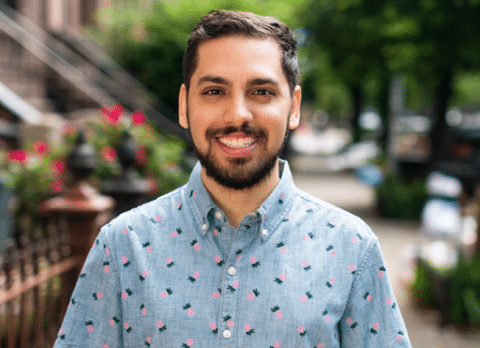

Start a watercooler conversation: